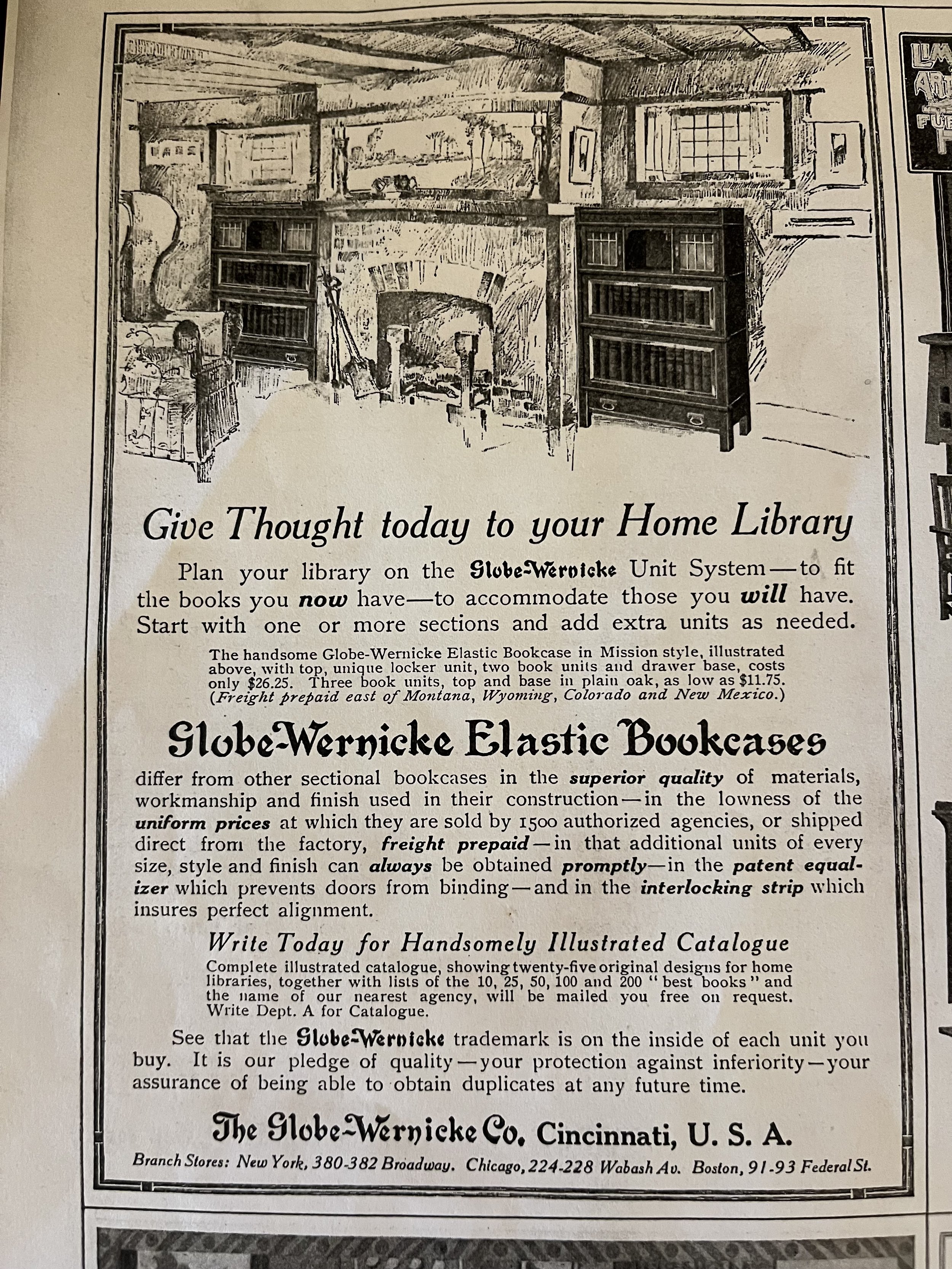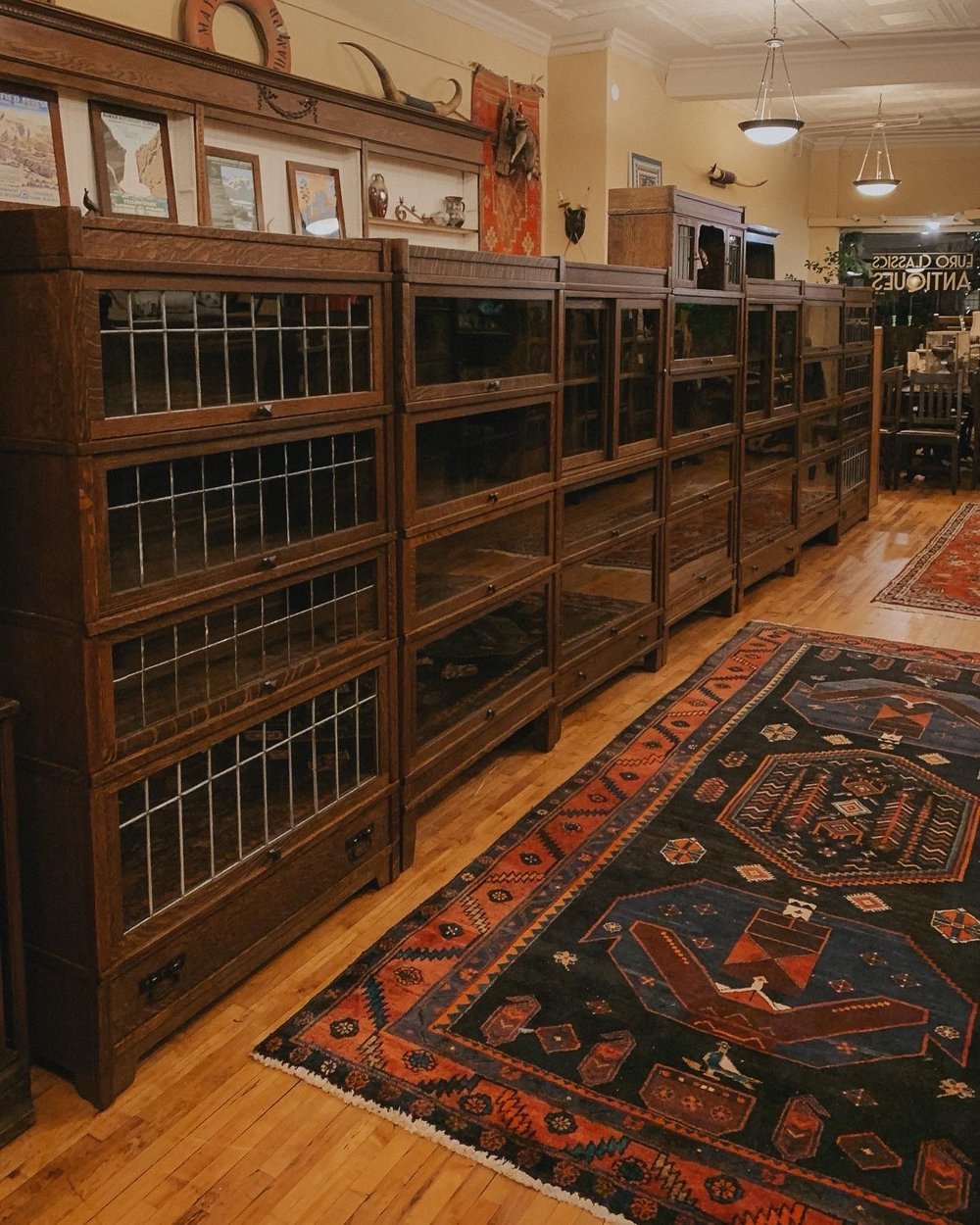Stacked with History: The Legacy of Barrister Bookcases and Their Makers
Among the many pieces of furniture that blend function with elegance, few are as instantly recognizable—or as quietly fascinating—as the barrister bookcase. With its modular, stacking design and glass-fronted compartments, this piece is both clever and timeless.
But there’s more to a barrister bookcase than just good looks. These were once essential tools of the legal profession, designed for portability, durability, and prestige. Today, they are treasured not only for their versatility but also for the quality and craftsmanship that defined the companies who made them.
In this post, we’re exploring three of the most important names in the history of barrister bookcases: Globe-Wernicke, Macy, and Danner. Each company helped shape the evolution of this iconic form—and their stories reveal why collectors and design enthusiasts consider barrister bookcases to be both functional furniture and enduring art.
What is a Barrister Bookcase?
Before we get into the makers, it’s worth understanding what makes a barrister bookcase unique. Originally designed for traveling lawyers (barristers), these bookcases were built in modular, stackable sections. Each shelf is a separate unit, often with a glass front that lifts up and slides back into the case—protecting books from dust and making the contents easy to access.
This sectional design allowed legal professionals to move their libraries from one office to another with ease, a necessity in an era when mobility was part of the profession.
Today, they’re just as useful in homes and offices for storing books, collectibles, or even as alternative display cabinets. Their clean lines and ingenious engineering have made them popular well beyond the legal world.
Globe-Wernicke: The Gold Standard
If there’s one name that dominates the barrister bookcase world, it’s Globe-Wernicke. Formed in 1899 by the merger of the Globe Company of Cincinnati and the Wernicke Company of Minneapolis, this firm became the premier producer of modular office furniture in the early 20th century.
An early example of a 6 stack Globe-Wernicke from the Seneca County Courthouse.
What They’re Known For:
Globe-Wernicke's bookcases are renowned for their precise engineering and handsome appearance. Made primarily from quarter-sawn oak, walnut, or mahogany, the cases feature smooth-rolling glass doors, solid brass hardware, and tongue-and-groove joinery. Each section was carefully designed to interlock with the others.
An example of Globe Wernicke’s “Mission Style” line. Rectilinear lines and mission style hardware.
Why They Matter:
Globe-Wernicke was the pioneer of the “elastic bookcase” system—a flexible, expandable concept that made them a favorite not just in the U.S. but globally. Their patented designs and high-quality materials made their bookcases status symbols in law offices, libraries, and academic institutions. Today, the Globe-Wernicke name is synonymous with authenticity and value in the world of antique modular furniture.
Original Globe-Wernicke advertisement. Here’s a link to their original catalog.
Macy: The Understated Contender
While most people associate Macy with the famous department store, the company also had a robust furniture division in the early 20th century. Macy-branded barrister bookcases are somewhat rarer than Globe-Wernicke but no less desirable—especially among collectors looking for alternatives to the usual suspects.
Great, clean example of a 6 stack Macy. All original / wavy glass.
What They’re Known For:
Macy bookcases were built with the same sectional logic but sometimes offered more decorative flourishes—curved bases, crown molding, or unusual wood types. Their design is slightly more stylized, which gives them a distinct personality.
Why They Matter:
Macy’s bookcases were aimed at a growing middle-class market that wanted quality office furniture with a touch of design. Though fewer of these pieces were made compared to Globe-Wernicke, their scarcity and unique details make them highly collectible today. They also represent a moment in American manufacturing when department stores were curating goods that balanced beauty with practicality.
Danner: The Originator
Well before Globe-Wernicke became the standard bearer, there was John Danner of Canton, Ohio—the man who arguably invented the barrister bookcase as we know it. Danner patented a revolving bookcase in the 1870s, but his real contribution came in the late 19th century when he developed one of the earliest stackable bookcase systems.
3 Stack Danner with the lower storage option.
What They’re Known For:
Danner’s bookcases were sturdy, handsome, and highly innovative for their time. He introduced a vertical stacking system and hinged glass fronts long before they became common. His early designs used locking mechanisms and dovetailed corners—features that emphasized strength and security.
An example of Danner’s Revolving bookcase, this one is fully restored.
Why They Matter:
Danner’s influence on the later development of sectional bookcases cannot be overstated. He laid the groundwork for what would become a furniture staple in law offices and libraries. Today, early Danner pieces are prized by serious collectors for their rarity and historic importance. In many ways, Danner represents the origin story of the American barrister bookcase.
A rare and early example of Danner’s three stack, also from the Seneca County Courthouse.
Why Collectors Love Them
To the casual observer, a barrister bookcase might look like a clever bookshelf. But for collectors and design lovers, they’re so much more:
Functionality: Stackable sections make them adaptable for small or evolving spaces.
Craftsmanship: Joinery, hardware, and wood grain tell the story of a time when quality mattered.
Heritage: These bookcases were used in institutions of learning and justice—places that valued knowledge and permanence.
Aesthetics: With their warm wood tones and clean silhouettes, they fit into both traditional and modern interiors with ease.
Many collectors view them as functional art—a phrase that captures their dual role as practical storage and historic beauty. They are often passed down through generations, serving as both heirloom and utility.
Side view of the Globe-Wernicke corner barrister unit.
Large matching and symmetrical Globe Wernicke barrister unit, with leaded glass sections and mission hardware.
Still Relevant Today
At Euro Classics Antiques, we’ve seen these bookcases bring warmth and elegance to everything from home offices and libraries to entryways and retail displays. Whether you're a seasoned collector or just someone who appreciates clever design, a barrister bookcase is a beautiful way to bring history into your everyday life.
We invite you to explore our collection—each piece has a story, and we’re always happy to tell it.
A very rare example of Globe-Wernicke’s corner barrister where the edges that meet are mitered at a 45 degree agle to accept each other and can be placed in a corner of a room.
A matching set of Mahogany barristers.
3 sections of the more modern Danner bookcases. These came out of the Ohio State Library collection.











